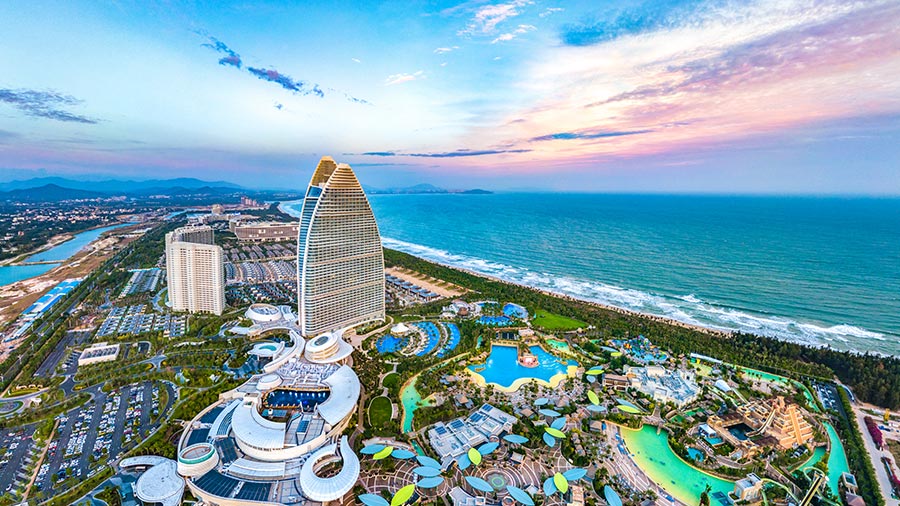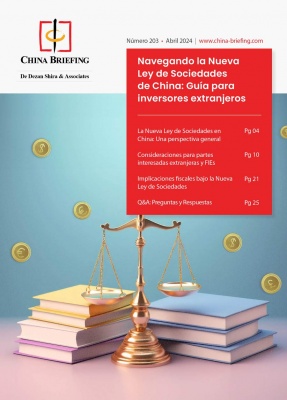U.S. Port of Miami’s Win-Win Relationship with China and Greater Asia
Sept. 21 – Port Miami’s new foreign trade zone, featuring a planned World Trade Center complex, represents an opportunity for Chinese multi-nationals to display goods for the entire market of the Americas, as Miami is the center of trade and commerce for Latin America as well as the southeast United States.
“We are much like Hong Kong in our trade patterns. A significant amount of Port Miami’s international trade is re-export trade bound for Latin America,” said Port Miami Assistant Director Kevin Lynskey.
In fact, Miami and Hong Kong are both gateway cities to their respective regions. Already a sister port to the Port of Shanghai, earlier this year Port Miami signed a sister port agreement with the Port of Kaohsiung in Taiwan, further reinforcing economic ties between Miami and China.

Economic ties deepen with the harbor
While the Panama Canal is expanding with a third lock, Port Miami is deepening its harbor to -50 feet. Fully laden mega-ships (8,500-13,000 TEUs), commonly known as Super post-Panamax ships, will for the first time gain direct access to the southeast United States. Port Miami will be the only port south of Norfolk, Virginia, able to accept these ships fully laden.
Along with the “Deep Dredge,” Port Miami is undertaking a US$2 billion public and private investment in infrastructure improvements, including a port tunnel –serving as a dedicated roadway connector linking port facilities with Florida’s interstate system – and on-dock intermodal rail for ease of ship-to-rail container transport. Florida East Coast Railway (FEC) provides seamless connections to major national railroads, enabling goods to reach 70 percent of the U.S. population within one to four days and to southeast U.S. markets before a ship can even arrive at ports north of Florida.
Port Miami and FEC are currently engaged in an aggressive joint marketing strategy, focused not only on steamship line companies, but also manufacturers, exporters, importers, 3PLs, supply chain, freight-forwarders, and custom house broker companies for the greatest market penetration.
“Several major companies have worked with Port Miami and FEC on pilot import container test programs and have been very pleased with the service, even prior to the completion of the harbor dredge and on-dock rail projects,” said David Banfield, director of sales and port development for the Florida East Coast Railway.

Port Miami as a key for America-Asia bilateral trade
Port Miami also serves as an efficient gateway for goods bound for Asia with 55 percent of the port’s cargo trade being export-driven. Port Miami and FEC authorities agree that Miami’s import/export trade with China is expected to double over the next decade for several reasons, listed below.
Balanced trade, import-export
Since Miami is at the end of the U.S. domestic supply chain, it can serve as a great transshipment hub when Asian trade is dropped at Port Miami and then quickly trans-loaded. Port Miami is actively working with the largest exporters to China, to re-fill Asia-bound containers filled with many different kinds of products. Some include:
- Soybeans
- Grain
- Scrap metal
- Paper
- Resins
- Frozen poultry
- U.S.-manufactured automobiles
- Raw-baled cotton
- Alternative fuels
“Import containers moving north from Miami will also benefit from attractive back-haul rates. Additionally, those same import containers, once made empty in U.S. markets beyond Jacksonville, Florida, can be reloaded with U.S. exports. In fact, a new U.S. export grain route is a near-future possibility,” Banfield said.
“Given the margin pressures that importers are facing in today’s economic environment, Port Miami and Florida East Coast Railway will be in position to significantly reduce transportation expense, inventory investment, and carbon emissions,” said James Hertwig, CEO and president of Florida East Coast Railway.
Turn-around
As China’s currency appreciates against the U.S. dollar, the exchange rate has created a more balanced trade scenario with China on a long-term basis, as the emergence of China’s middle class progresses.
“As purchasing power gravitates to the Chinese middle class, the more their select tastes for acquiring higher-end U.S. consumer products will be,” said Banfield.
“The changing Chinese diet – shifting to animal proteins as disposable income increases – represents a substantial opportunity for the U.S. to export more filled containers to China. The U.S. has a substantial fresh-water advantage over most of the world and has its most productive agricultural sector,” Lynskey added.
Partnerships
Several large Pacific trade carriers are courting Miami for a long-term access agreement for Port Miami’s largest cargo terminal, according to Lynskey. Miami has been approached to work with Chinese business interests as a principal access point for Asian imports into the southeast United States. The proposal incorporates a massive mid-state rail-served logistics park for distribution of Chinese-made products, as well as related light manufacturing activities. Under consideration is a dedicated on-port office tower for Chinese multi-national firms (‘China 1’) located in the midst of a downtown Miami World Trade Center complex.
Business with benefits
“FTZs and Miami are a match made in trading heaven, whether the goods were made in America or imported from China and stored in an FTZ for re-export,” Lynskey said.
Asian exporters shipping into Port Miami will not be required to pay U.S. import duties, as long as the goods are heading from one foreign country to another. The port plans to set up satellite zones that would allow companies to have FTZ benefits in their own secure warehouses.
Flagler’s South Florida Logistics Center is within the FTZ and enables companies to put warehouses, distribution centers and trans-load operations on site, where movement of containers from the rail to the facility would not have to go out onto a public highway, according to Hertwig.
Miami and Asia’s win-win relationship
According to the U.S. Customs and Border Protection guidelines, the following are advantages for conducting business in a foreign trade zone:
- While in the zone, merchandise is not subject to U.S. duty or excise tax, and duties may be paid at the time they are transferred to the U.S. market for consumption.
- Goods may be exported from the zone free of duty and excise tax.
- Merchandise may remain in a zone indefinitely, whether or not subject to duty.
- Manufacturing and assembly is allowed within a zone. A zone user who plans to send the merchandise into the U.S. market may normally elect to pay either the duty rate applicable on the foreign material placed in the zone or the rate applicable on the finished article, whichever is most advantageous.
When you factor in that Florida is the fourth-largest state economy in the United States, that it houses more than 19 million residents, and more than 85 million out-of-state residents annually visit, it is clear that Port Miami is well positioned to be the first port of call for ships carrying goods to and from Asia.
Dezan Shira & Associates is a specialist foreign direct investment practice, providing corporate establishment, business advisory, tax advisory and compliance, accounting, payroll, due diligence and financial review services to multinationals investing in emerging Asia. Since its establishment in 1992, the firm has grown into one of Asia’s most versatile full-service consultancies with operational offices across China, Hong Kong, India, Singapore and Vietnam as well as liaison offices in Italy and the United States.
For further details or to contact the firm’s U.S. office, please email jessica.tou@dezshira.com, visit www.dezshira.com, call 704-808-5287, or download the company brochure.
You can stay up to date with the latest business and investment trends across China by subscribing to The China Advantage, our complimentary update service featuring news, commentary, guides, and multimedia resources.
About Port Miami
Port Miami is among America’s busiest ports and is recognized across the globe with the dual distinction of being the “Cruise Capital of the World” and the “Cargo Gateway of the Americas.” Port Miami contributes more than US$18 billion annually to the South Florida economy and helps provide direct and indirect employment for more than 180,000.
1015 N. America Way, 2nd Floor
Miami, FL 33132
(305) 371-7678
- Previous Article Beijing Issues Circular on Implementing Transitional Financial Support Policies
- Next Article The Best of Asia Briefing – August/September 2012

























